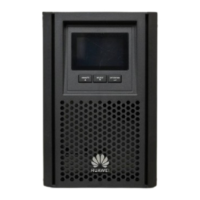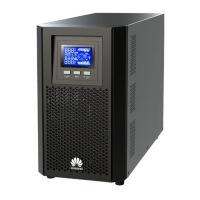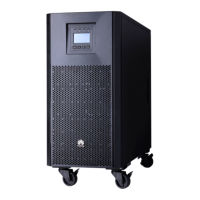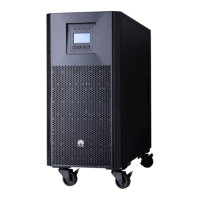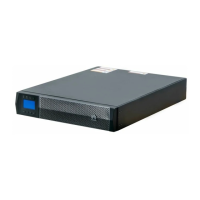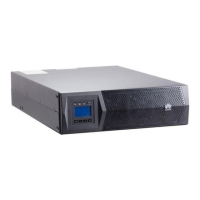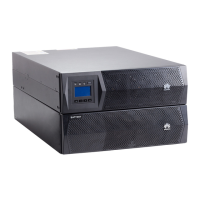3. Take out the UPS, then place the UPS on a stable mounting surface, as shown
in Figure 4-2.
Figure 4-2 UPS
4.4 Connecting Cables to a UPS
● Never connect a device that will overload the UPS, such as a laser printer, to the output
socket of the UPS.
● When routing cables, keep them away from the place where they are easily to be
stepped on or make someone stumble.
● Never connect household appliances, such as a hair drier, to the output socket of the
UPS.
● The socket connected to the UPS must be a grounded shockproof socket and be close to
the UPS for easy access.
● Use power cables that comply with Verband Deutscher Electrotechniker (VDE) test
standards and Conformité Européenne (CE) certication to connect the UPS to an
indoor shockproof socket. The power cable can be the main power cable for a PC.
● Use power cables that comply with VDE test standards and CE certication to connect a
load to the UPS.
● When installing the UPS, ensure that the total leakage current of the UPS and
connected loads does not exceed 3.5 mA. The recommended upstream earth leakage
circuit breaker (ELCB) is more than 30 mA.
Procedure
1. Connect the UPS output power cable.
– For socket-type output, connect loads to the UPS output sockets. When a
power failure occurs, the UPS automatically supplies power to the loads.
– For output by terminals, perform the following steps to connect cables:
i. Remove the small protective cover from the wiring terminal.
ii. You are advised to use 2.5 mm
2
power cables.
iii. Check that all cable connections are correct.
UPS2000-A-(1 kVA-3 kVA)
User Manual 4 Installation and Cable Connection
Issue 17 (2024-01-30) Copyright © Huawei Digital Power Technologies Co., Ltd. 38

